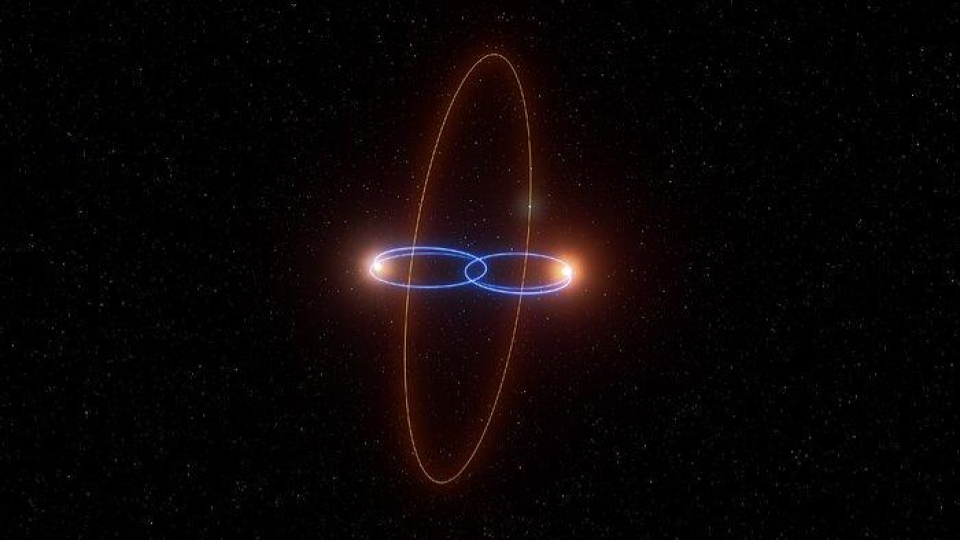
The Universe sometimes likes to mock us. Such is the case with exoplanets. Once upon a time, researchers would sagely say, “Solar Systems like Tatooine, with twin stars, likely don’t exist.” The thing is, this was based on models that relied on limits created with human minds, and reality is a lot more creative than we are.
Over the years, we’ve found just about every kind of planet in just about every kind of situation: They snuggle with their stars. They run loose through the galaxy. They’ve been seen orbiting one star in a binary system. They’ve been seen orbiting both stars in the binary system in the same disk as the star. And now…
Now we have found a planet – we think – that is orbiting around a pair of brown dwarfs at a right angle to how they are going around one another. And the whole thing is being slowly orbited by yet another star.
The inner two stars in the system are similarly sized, tiny brown dwarf stars that are only about 35 times the mass of Jupiter. As researchers watch them going round and round in an eclipsing orbit, it’s possible to see their orbits rotate over time. This kind of motion requires some other mass to be out there, exerting a force on the system. The source couldn’t be another star, or it would have been seen, so it had to be something smaller and fainter. Other possible sources – like the spins of the stars and their orbits being out of alignment – wouldn’t create changes as large as what we’re seeing. Only two possibilities seem to work: either there is a planet in a perpendicular orbit that is yanking the tiny stars, or there is some kind of debris disk. While the possibility of a debris disk can’t be eliminated, the system appears to be old enough for any proto planetary discs to be done forming, and we’d also expect to see infrared light from a disk…and we don’t. This means a weirdo planet is the system’s best explanation.
How does a planet get into that kind of orbit? Well – I look forward to seeing what the theorists come up with, and when their papers come out, we’ll bring them to you right here at Escape Velocity Space News.
